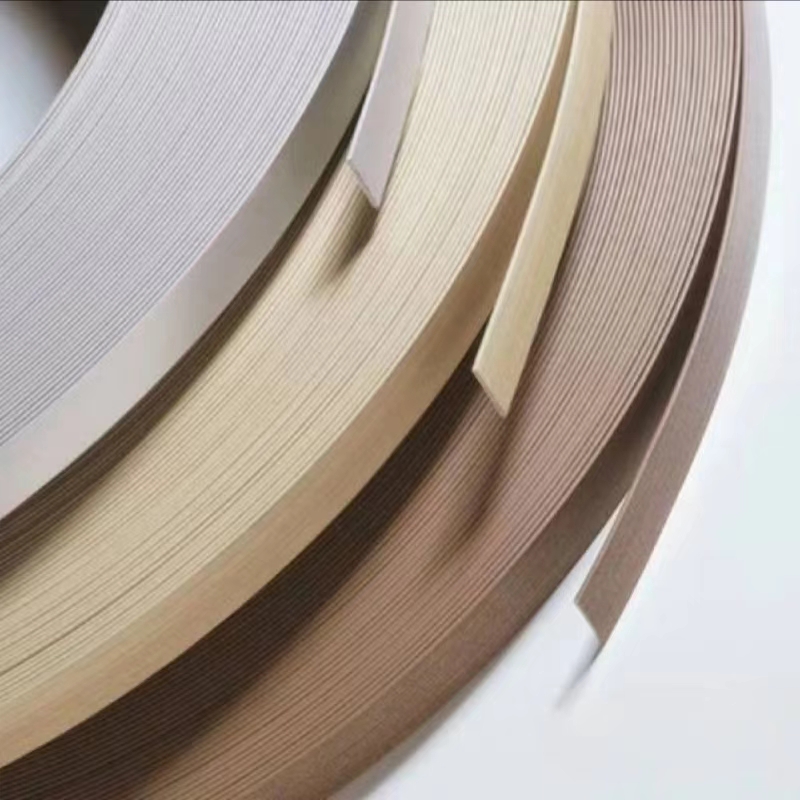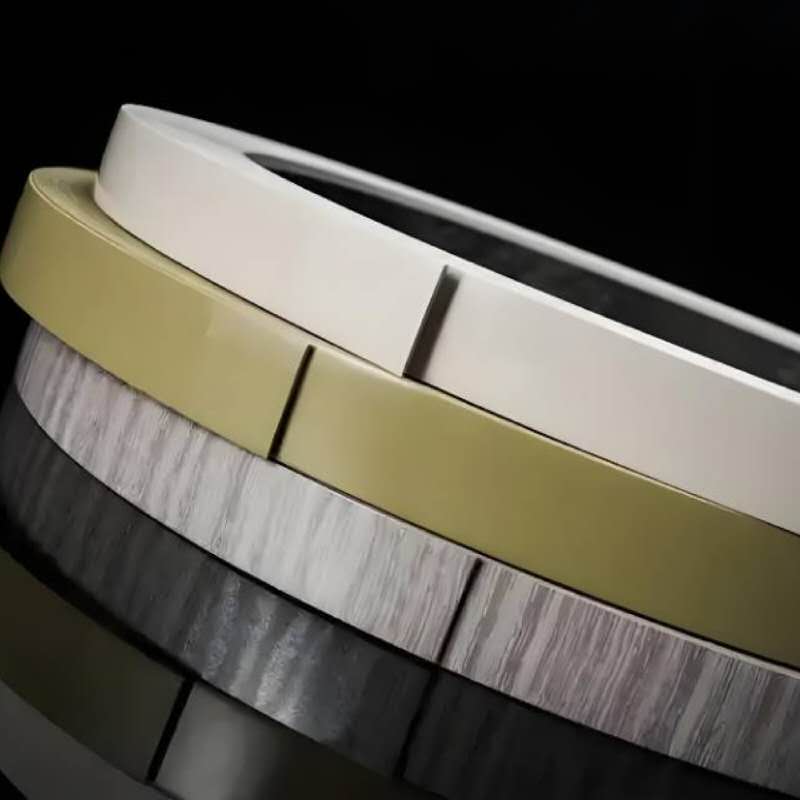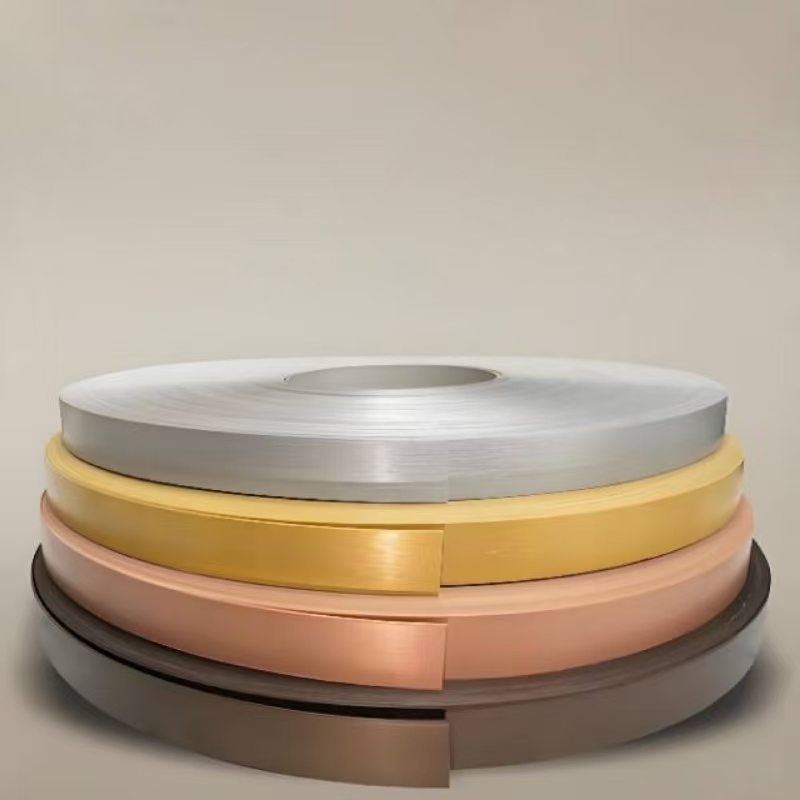Edge banding is an important component in furniture manufacturing and woodworking industries, mainly used to decorate and protect the edges of furniture boards. Edge banding can not only improve the aesthetics of furniture, but also effectively prevent moisture penetration in wood and extend the service life of furniture. With the entry of edge banding of different materials into the market, Abs edge banding has become one of the first choices for many furniture manufacturers and consumers due to its excellent physical properties, durability and aesthetics. So, can Abs edge banding tape be removed? This is a question that many consumers and manufacturers are concerned about.
This article will discuss in depth the question of "Can Abs edge tape be removed?" First, we will introduce the basic characteristics and applications of Abs edge banding, then explore the difficulty of removing Abs edge banding and the factors that may affect removal, and finally summarize the feasibility of removing Abs edge banding tape and related precautions.

What is Abs edge banding?
ABS (Acrylonitrile-Butadiene-Styrene Copolymer) is a high-strength, impact-resistant plastic material that is widely used in many industries such as automobiles, home appliances, electronic products and furniture. Abs edge banding is an edge banding made of ABS material, which is usually used for edge treatment of wooden furniture, cabinets and other panel furniture. Compared with traditional PVC edge banding, Abs edge banding tape has better high temperature resistance, impact resistance and longer service life.
Features of Abs edge banding
● Strong durability: Abs edge banding has high impact resistance and wear resistance, and can effectively resist damage caused by daily use.
● High temperature resistance: Abs edge banding tape can withstand high temperatures, so it is not easy to deform or soften in a hot environment.
● Aesthetics: Abs edge banding tape has a smooth surface and rich colors, which can match different types of furniture and decoration styles.
● Environmental protection: ABS is an environmentally friendly material that does not contain harmful substances and meets modern environmental protection requirements.
● Good processing performance: Abs edge banding tape has strong processability, can be installed by hot pressing, hot melting, etc., and has excellent surface treatment effect.

Can Abs edge banding be removed?
Abs edge banding tape is fixed to the edge of the furniture board by heat pressing, hot melting or other methods, so it is theoretically removable. However, the removal process may not be as simple as the initial installation, especially when the edge banding has been firmly bonded to the substrate, and some difficulties may be faced during removal.
● The difficulty of removing Abs edge tape depends mainly on several factors: the adhesive or bonding method used during installation, the degree of bonding between the edge banding and the substrate, and the type and thickness of the edge banding.
Difficulty of removing Abs edge banding
● Removal of hot melt adhesive edge banding: If the Abs edge banding is fixed using hot melt adhesive or similar thermal bonding methods, then the removal usually requires heating to soften the adhesive layer so that the edge banding can be easily separated from the substrate. This process is usually relatively simple, but if the appropriate tools are not used, it may damage the wood surface.
● Removal of hot press edge banding: For Abs edge banding tape fixed by heat pressing, removal will be more difficult. This type of edge banding usually requires higher temperatures and greater forces to peel it from the substrate. If the edge banding is firmly bonded to the substrate, removal may cause damage or deformation to the wood surface.
● Bond strength: The bond strength of Abs edge banding tape depends on the type of glue used and the process. If a high-strength adhesive material is used, more effort will be required for removal, and it may not even be possible to completely remove the edge banding, but a part of the adhesive layer will remain on the substrate.
Potential problems during the removal of Abs edge banding
● Damage to the substrate surface: The removal of Abs edge tape may cause scratches, dents or peeling on the substrate surface, especially when improper tools or methods are used during the removal process. Especially on wood or other sensitive substrates, the traces left after removal may require additional repair work.
● Difficult to restore to the original state: After removing the edge banding, the edge of the substrate may be uneven or damaged, especially in the case of hot-pressed edge banding. Although it can be re-sealed or repaired, it is difficult to completely restore it to the original flat state.
● Glue residue: If Abs edge banding uses hot melt glue or other types of glue, glue residue may be left on the substrate surface after removal. These residues not only affect the appearance, but may also affect the effect of subsequent re-edge sealing. Professional cleaners or heat treatment tools are required to remove residual glue.
Precautions when removing Abs edge banding
● Temperature control: For hot melt adhesive edge banding, ensure that it is heated to an appropriate temperature when removing it. Too high a temperature may cause deformation or damage to the wood substrate, while too low a temperature may not effectively soften the glue layer, increasing the difficulty of removal.
● Use professional tools: When removing Abs edge banding tape, appropriate tools such as scrapers, hot air guns, etc. should be used to avoid direct use of sharp knives or rough operations to avoid damaging the surface of the substrate.
● Consider repair after removal: After removing Abs edge banding tape, the edge of the substrate may need to be repaired or reprocessed to ensure its flatness and appearance. In particular, during the removal process, slight scratches or dents may be caused to the wood surface, and polishing and repairing should be performed if necessary.

What are the application scenarios for the removal of Abs edge banding?
Furniture repair and renewal
During furniture repair, it is common to remove the old Abs edge tape and replace it with a new one. This usually happens when the edge banding is aged, discolored or damaged after the furniture has been used for a period of time. By removing the old edge banding and re-banding it, the life of the furniture can be extended and its appearance can be improved.
Product reuse and recycling
In some product recycling scenarios, removing the edge banding is one of the common operation steps. During the recycling process, the edge banding needs to be removed from the original substrate so that the substrate can be reused or processed in other ways. The removal of Abs edge banding is relatively difficult, so special removal equipment or tools are required to ensure efficiency and accuracy.
Improving design or redecorating
Sometimes, the design of furniture or wood products needs to be changed or redecorated. At this time, removing the original Abs edge banding tape and reinstalling the new edge banding is part of achieving the design change. By removing the original edge banding, you can reselect the appropriate edge banding material and color to achieve the purpose of updating the design and improving the function.
Although Abs edge banding tape can be removed, the difficulty of the removal process is related to a variety of factors, including the installation method of the edge banding, the type of glue used, and the choice of removal tools. Compared with PVC edge banding, Abs edge tape is slightly more difficult to remove, but with the right temperature control and tools, the removal work is feasible. However, the removal process may damage the surface of the substrate, resulting in uneven surface or leaving glue residue, so it needs to be operated with caution.

Affordable High-Quality Edge Banding from Dongguan Tingjie
Dongguan Tingjie Decoration Materials Co., Ltd. manufactures and supplies affordable, high-quality edge banding materials, including PVC, ABS, and wood grain products. Our factory in Dongguan, China, ensures that we provide low prices for bulk orders and attractive discounts. As a trusted supplier, we specialize in T-type and U-type profiles, and we offer customized products to suit any application. With our efficient production capabilities, we guarantee prompt delivery and competitive prices for customers globally.




